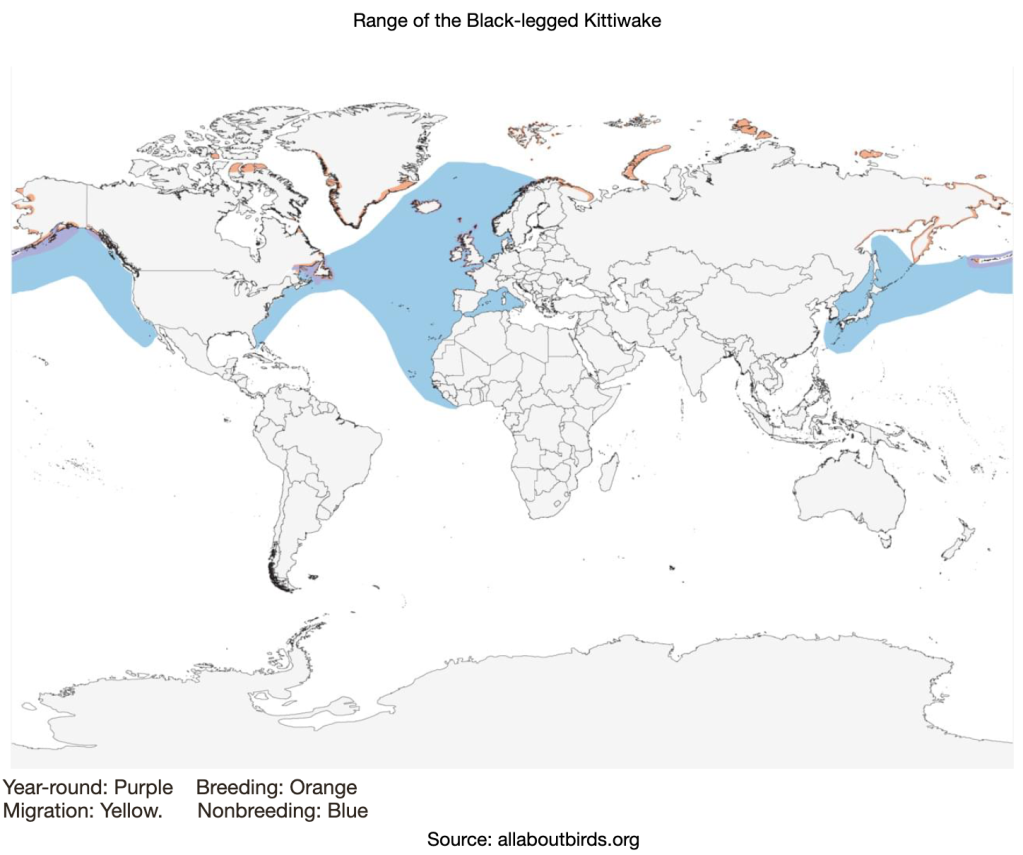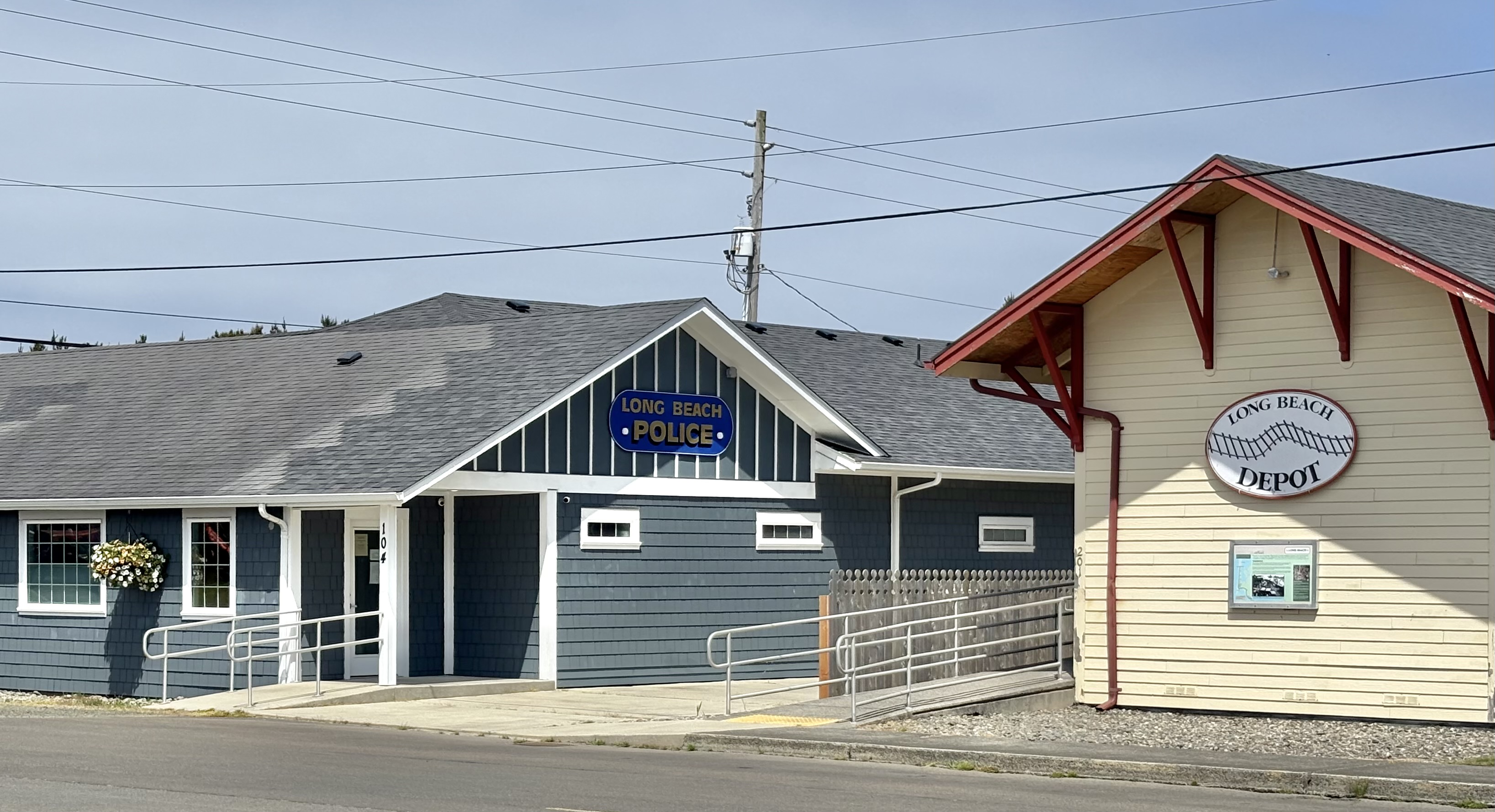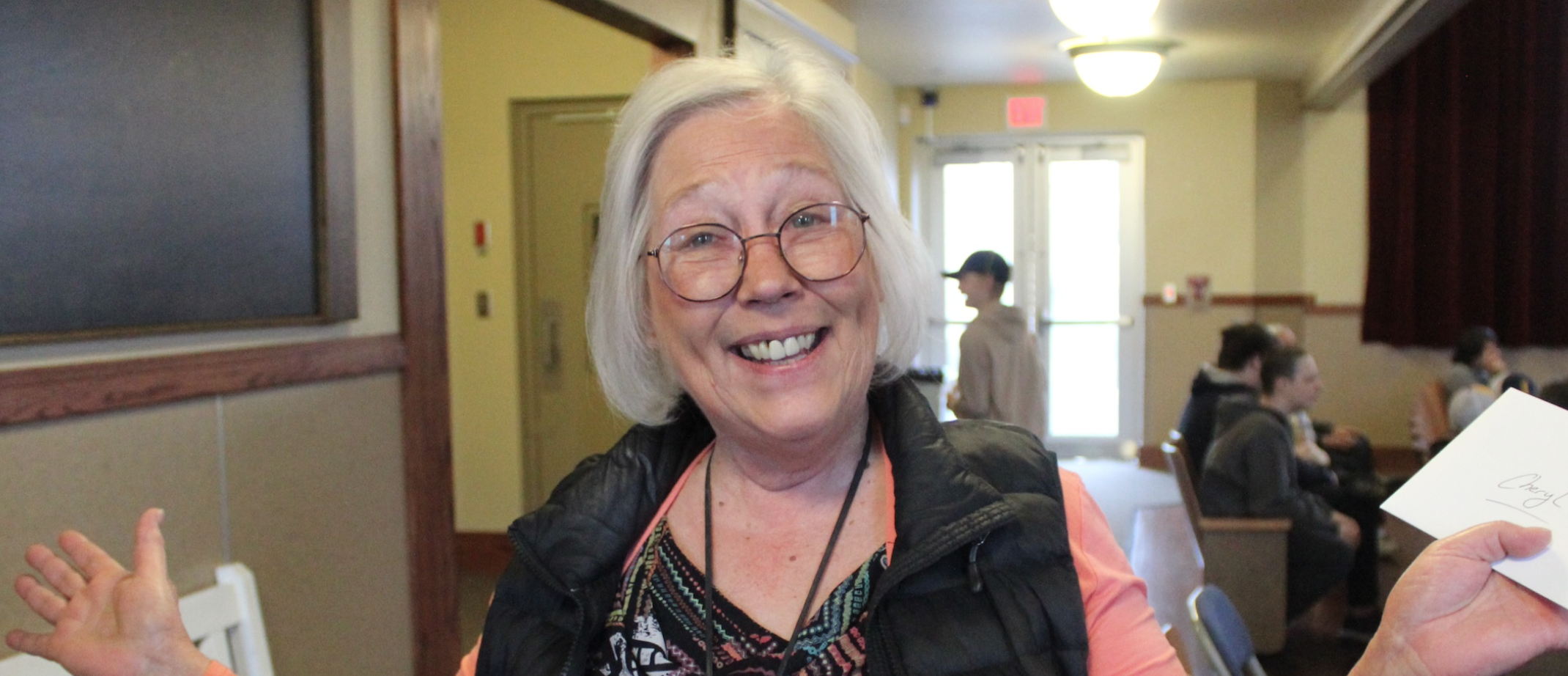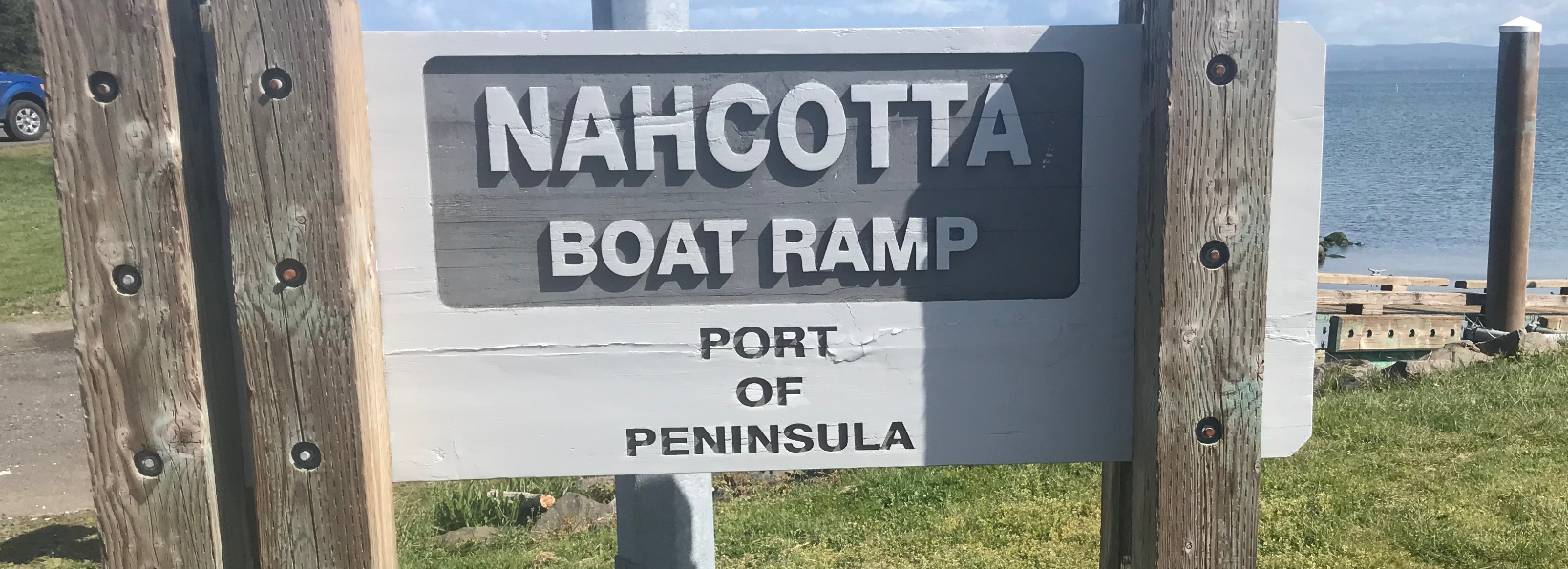Birding: Common but rarely seen: Black-legged kittiwake
Published 12:47 pm Thursday, August 8, 2024

- Black-legged kittiwake range map
The black-legged kittiwake was reported at the Tokeland marina for a few weeks in late July. Also, according to eBird, the kittiwake has been reported occasionally offshore from our beaches, Cape D and the North Head since 2019. The black-legged kittiwake is a small, common seagoing gull and as such is not often seen from shore. So, it is a treat if one appears in Pacific County close enough to see, and especially if it is seen in our part of the county from our shorelines. I have seen it once from our ocean beach, but quite a few years ago now.
The black-legged kittiwake is an interesting and strikingly beautiful gull. I recently saw many, many thousands of them on a recent trip to Iceland to study and photograph seagoing birds. Scientists recognize two subspecies of this kittiwake, namely, one of the Arctic and North Atlantic and a slightly larger bird of the North Pacific. One other difference being that the black-legged kittiwake of the North Pacific has blacker primaries (wing tips) compared to the birds of the North Atlantic and Arctic (according to Cornell Lab).
When we see a black-legged kittiwake, it is generally in winter, but birders have been seeing at least one at the Tokeland marina in summer. eBird reports indicate that the observed bird has short black legs, a smudge behind the eye(some reports call it a dark spot) and a yellow bill. This describes a nonbreeding black-legged kittiwake. If it were a young kittiwake it would have a dusky band on the nape, a black-tipped tail and a dark diagonal wing band and if it were an adult it would have short black legs, a pale gray back and wings and a yellow bill.
Black-legged kittiwakes are colonial nesters that nest on cliff tops or ledges. They lay two pinkish-buff spotted eggs in a nest crafted of moss and seaweed. Their breeding range is the Arctic. In winter they go to sea, where they feed on plankton and small fish. It is the only gull that swims and dives under water to capture food.
Wings Over Willapa is set to take place again this September. One of the activities offered is a boat trip to see pelagic species. This might be a great opportunity to see a black-legged kittiwake. Another opportunity and almost sure thing is the pelagic trip that runs out of Westport, Washington. Further information can be found at www.westportseabirds.com.
Happy birding!





